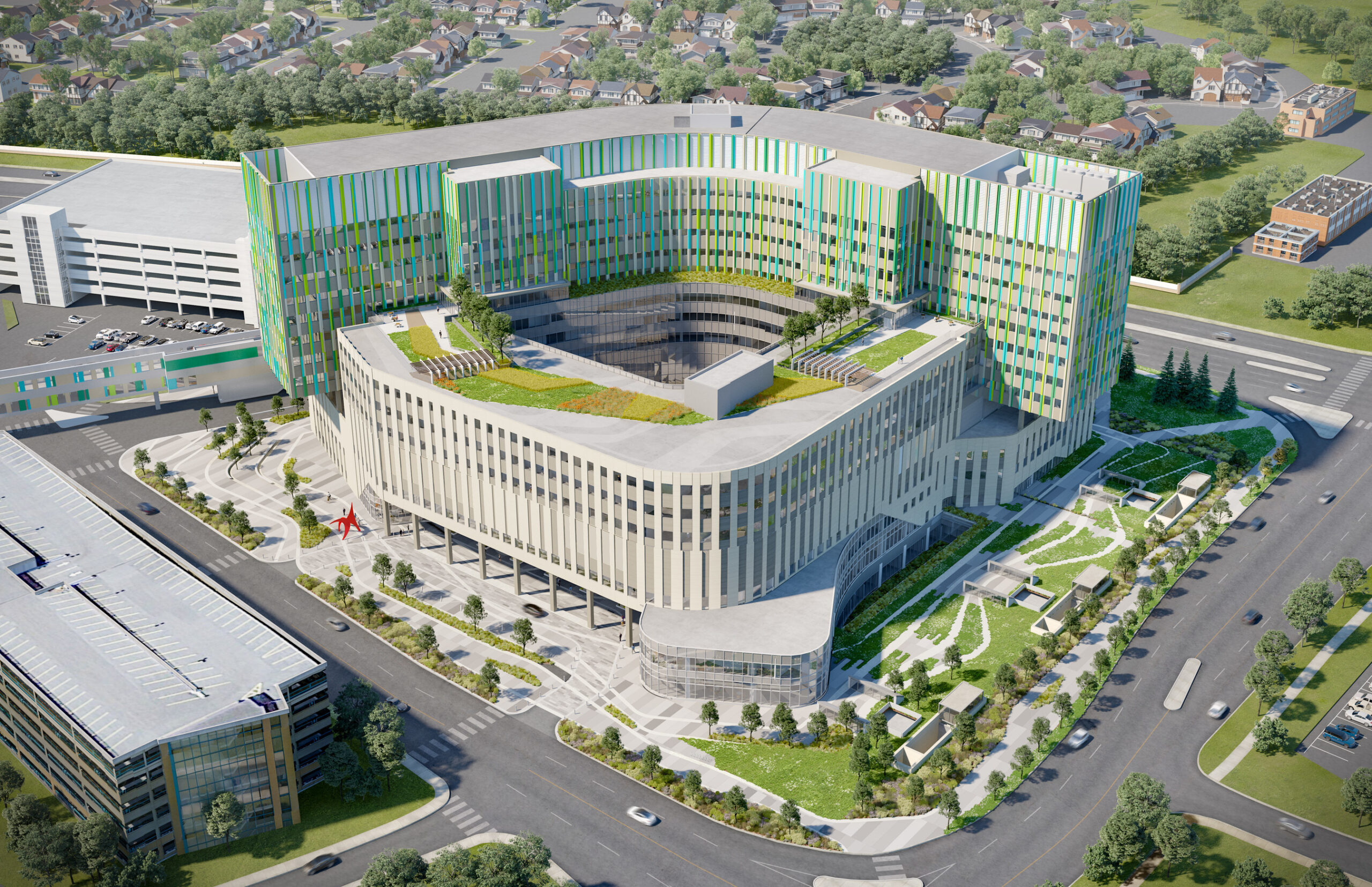
TK Elevator installs elevators with robotic capabilities at Calgary Cancer Centre
by CM Staff
The Government of Alberta invested $1.41 billion for the facility.

TK Elevator has installed approximately 30 of its digitally advanced elevators at the new Calgary Cancer Centre, which will be the largest standalone cancer center in Canada upon completion. Photo courtesy of PCL Construction.
CALGARY — TK Elevator has completed installation of approximately 30 digitally advanced elevators at the new Calgary Cancer Centre at Foothills Medical Centre.
The Government of Alberta invested $1.41 billion for the facility.
The company commenced construction in 2017 and remains on track with an anticipated opening in 2023.
PCL Construction functions as the general contractor for the project with more than 8,100 employees across 30 major centres. PCL reports an annual construction volume of $7.6 billion and has worked in the areas of civil infrastructure, heavy industrial and buildings markets.
According to PCL, the Calgary Cancer Centre will be the largest standalone cancer centre in Canada upon completion.
“Hospitals and medical facilities throughout North America are embracing the important role digital elevator technologies can play in ensuring the safe, efficient movement of patients and medical supplies. The Calgary Cancer Centre embodies what smart hospitals will look like in the future and we are proud to be a part of such an important project,” said Kevin Lavallee, CEO BU North America and Group COO Field in a statement.
The 12 service cars at the main hospital feature TK Elevator’s Application Programming Interface, which allows robots to use elevators like humans. This functionality will enable transportation of medical supplies throughout the facility.
The interface permits robots to act like human passengers, placing a call for an elevator via WiFi or 5G LTE, selecting a floor and then exiting the elevator upon reaching its destination. Using Machine Vision, a robot can determine if an elevator has enough room or if it’s too full to accommodate the robot. The interface also informs the elevator system when to open the doors and adjust door dwell timing to ensure the smoothest journey possible for the robot. The robotics interface can also be used for other purposes, including housekeeping and security.